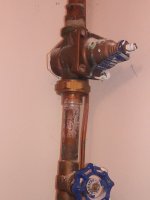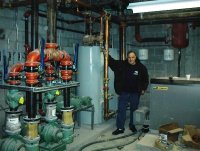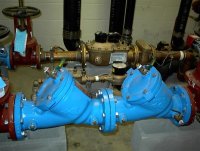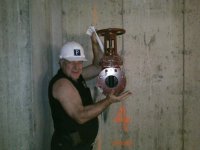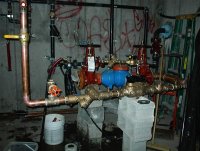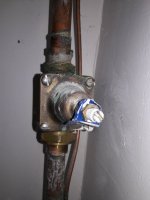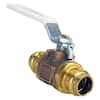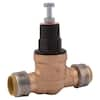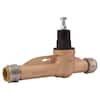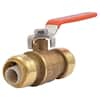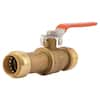Confoozled
New Member
Hi all -
I was getting ready to do some work on the water heater pipes when something I read skimming threads here made me think to check my water pressure.
I'm getting 120 psi inside (utility sink) and outside (hose bib). Rut-Roh. I'm in a hilly neighborhood at the bottom of moderately-high hill. The pressure dips to 55 with another tap full open. I'll borrow someone else's gauge just to make sure mine isn't bonkers. Meanwhile...
In the basement is an adjustable Watts pressure reducing valve (photo - pretty much what's available today; output psi adjustable 25-75) between my in-house shut-off and the one outside in the buffalo box. It's original to the house, so a bit over 20 years old.
Some questions. I generally fear that an old valve that hasn't been nudged in 20 years may leak if I try to adjust it. Is this a valid fear?
Second, if the output on this PRV is adjustable from 25-75 psi and I'm getting 120 psi downstream of the valve, then is it likely it is completely shot (no longer adjustable) anyway?
Also, if you've ever tested a system with fairly high pressure, would you expect the pressure to drop by half when a tap is opened? Or does this indicate some issue in addition to a (potentially) faulty pressure reducing valve?
Many thanks for any guidance, and finally, apologies if this should be in a different forum. I scanned through them but didn't see one more relevant.
I was getting ready to do some work on the water heater pipes when something I read skimming threads here made me think to check my water pressure.
I'm getting 120 psi inside (utility sink) and outside (hose bib). Rut-Roh. I'm in a hilly neighborhood at the bottom of moderately-high hill. The pressure dips to 55 with another tap full open. I'll borrow someone else's gauge just to make sure mine isn't bonkers. Meanwhile...
In the basement is an adjustable Watts pressure reducing valve (photo - pretty much what's available today; output psi adjustable 25-75) between my in-house shut-off and the one outside in the buffalo box. It's original to the house, so a bit over 20 years old.
Some questions. I generally fear that an old valve that hasn't been nudged in 20 years may leak if I try to adjust it. Is this a valid fear?
Second, if the output on this PRV is adjustable from 25-75 psi and I'm getting 120 psi downstream of the valve, then is it likely it is completely shot (no longer adjustable) anyway?
Also, if you've ever tested a system with fairly high pressure, would you expect the pressure to drop by half when a tap is opened? Or does this indicate some issue in addition to a (potentially) faulty pressure reducing valve?
Many thanks for any guidance, and finally, apologies if this should be in a different forum. I scanned through them but didn't see one more relevant.
Attachments
Last edited:

